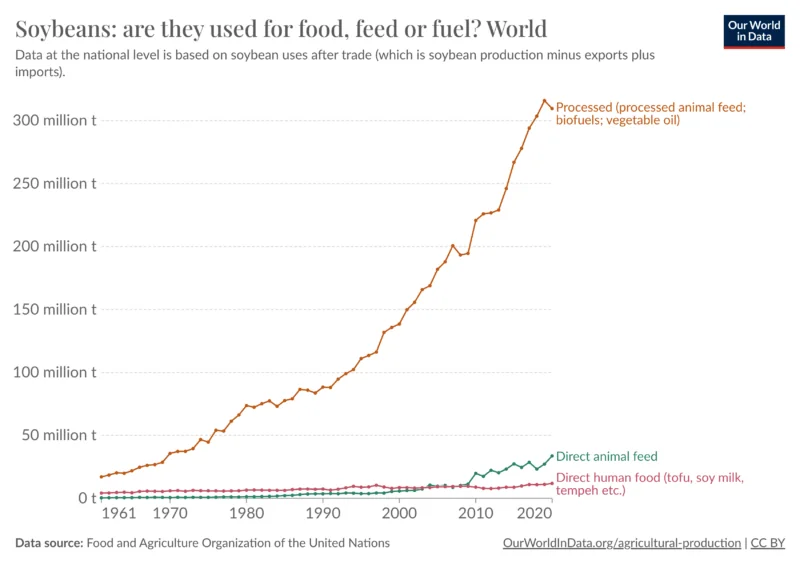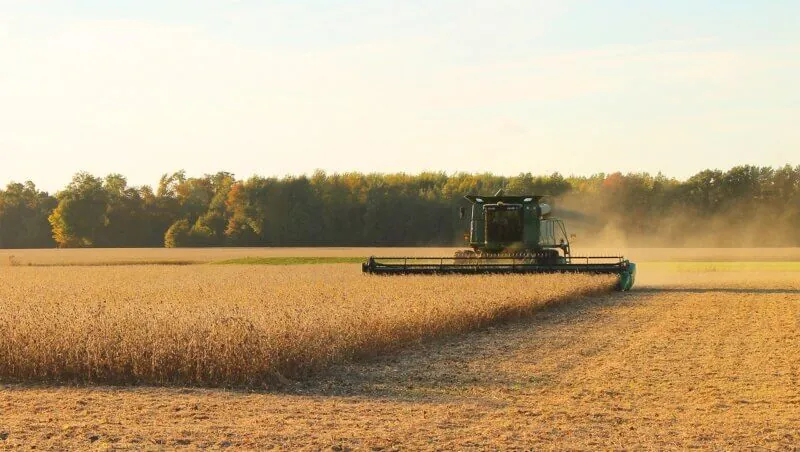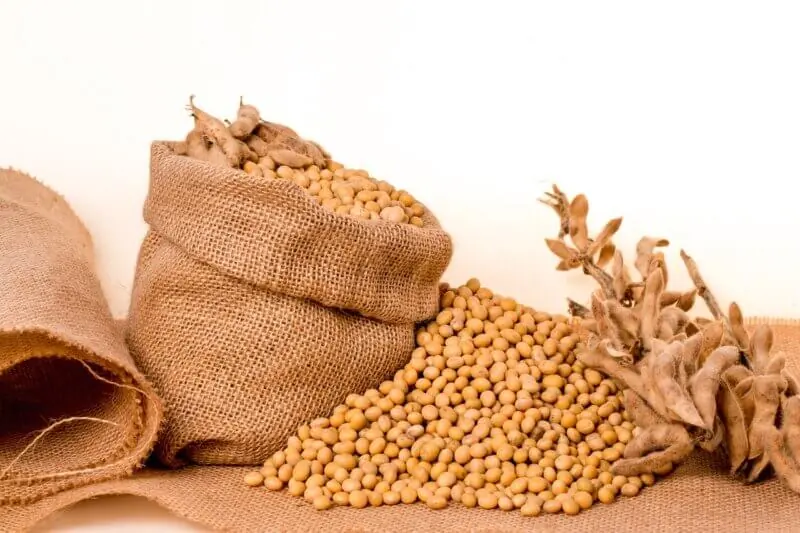ALL NEW FOUNDATIONAL INTELLIGENCE MODEL (FICE) - Get your Insights Report Here
Hilda Sanchez-Madrigal • October 31st, 2023.
In the vast realm of agriculture, the trajectory of soybeans stands out. These small beans, innocuous at first glance, represent a global phenomenon: the struggle between nature’s unpredictable forces and our relentless drive for progress.
Today, as climate patterns shift in unprecedented ways, we are witnessing the intersection of soybean cultivation, the challenges of climate change, and the opportunity presented through emerging technologies like artificial intelligence (AI).
It’s nearly impossible to overstate the profound reach of the soybean. Although often overlooked in its ubiquity, its role is quietly pervasive. From its impact on daily diets in the U.S. to the Korean dairy industry to European aviation, soybeans are an economic powerhouse. Recent research underscores the U.S. soybean industry’s immense economic contribution, valued at an astonishing $124 billion.
Beyond its direct consumption — which is also seeing a shift as Western diets become more plant-based and Asia’s meat consumption rises — the soybean has an essential role as livestock feed, influencing the meat and dairy sectors. A remarkable 29% of the world’s vegetable oil is derived from soybeans. Its potential doesn’t end here; burgeoning interest in biodiesel production also marks soybeans as a crucial player in the alternative energy arena.

Despite the hardiness of the soybean, this agricultural giant isn’t immune to the challenges posed by our changing climate. As insights from the Economic Defense Fund (EDF) suggest, variations in temperature and precipitation during the growing season can significantly impact yields. Historically, soybean production has benefited from some shifts, such as reduced frost risks, which allow for earlier sowing. It has also been found that elevated CO2 levels benefit the industry by increasing crop yields.
At the same time, more significant trends demonstrate the vulnerabilities facing soybean cultivation. For instance, in 2012, soybean producers met a climatic wake-up call. The U.S. experienced exceptionally hot and dry conditions between May and August, severely stressing soybeans during their pivotal reproductive stage. But the U.S. wasn’t alone. Major soybean regions, including the Midwest, Brazil, and Argentina, reported significantly diminished yields. These simultaneous production shortages sent global soybean prices skyrocketing to unprecedented levels. As for the elevated CO2 levels and the increasing yields, they have been shown to reduce soybean protein and nitrogen content, adversely affecting quality. These trends illuminate the complex vulnerabilities in soybean cultivation against the backdrop of changing climate patterns and emphasize the pressing need for advanced, predictive solutions.

Understanding and mitigating these challenges necessitates a paradigm shift. This is where solutions, exemplified by platforms like ClimateAi, step in. With specialized analytics tailored for agriculture, these tools provide predictive insights into upcoming weather patterns specific to various crop requirements, including soybeans. This technology makes it possible to anticipate an unusually wet season and adapt sowing patterns accordingly, minimizing crop damage and maximizing yield. By harnessing vast data streams and employing predictive analytics, farmers receive actionable insights into best practices for cultivation and strategies to harness changing climatic conditions.
Climate change, often viewed through a lens of trepidation, can also be seen as an opportunity, especially when coupled with technological advances. Some studies, like the one from the University of Minnesota, suggest that certain aspects of climate change could be advantageous for soybean yields.
For instance, warming trends could render cooler regions such as Northern Germany and France suitable for soybean cultivation. By identifying these opportunities early, farmers can diversify their crop rotations, creating a buffer against potential yield losses and boosting biodiversity.
AI can be the torchbearer in this exploration, decoding complex datasets to offer farmers tangible, actionable insights. AI can transform challenges into lucrative opportunities by suggesting optimal planting times, irrigation strategies, and even pest management techniques tailored to evolving climate patterns.
Beyond cultivation, understanding market dynamics is crucial. As dietary trends evolve in Asia and the West and sustainable fuel sources gain traction, soy demand could skyrocket. AI can play a pivotal role in forecasting these market demands and providing insights into potential shifts in consumer preferences. Tools like ClimateAi that can analyze vast amounts of economic and agricultural data can help. They enable the soybean industry to align production strategies, ensuring supply meets demand and preempting potential economic pitfalls.

While enhancing yields and understanding market dynamics is essential, the broader vision encompasses sustainable and ethical farming. A call to arms, like that from the recent 11th World Soybean Research Conference (WSRC) in Vienna, emphasizes this urgency. The mission is twofold: increase yield while ensuring sustainable practices, prioritizing biodiversity, and avoiding deforestation.
Once again, AI emerges as a valuable ally. Predictive algorithms can analyze historical data and real-time inputs to suggest crop rotation strategies that optimize yields and promote soil health while anticipating potential pest outbreaks. Additionally, agribusinesses can analyze satellite imagery beyond the farm to monitor deforestation and suggest alternative, sustainable farming locations.
In this era of rapid transformation, the confluence of soybeans, climate change, and AI paints a riveting narrative. It’s a story of challenges, yes, but also one of innovation and untapped potential. As global interconnectivity burgeons, platforms like ClimateAi will undoubtedly shape agriculture’s future, ensuring its sustainability, profitability, and resilience.
In leveraging these technologies, global agriculture, with soybeans at its forefront, is not just poised to weather the storms of climate change but to thrive and prosper in the ensuing decades. As we stand at this pivotal juncture, the synergy of nature’s age-old processes with cutting-edge technologies offers new promise for the future.
To learn more, watch this video in which ClimateAi CEO and co-founder, Himanshu Gupta, dives deeper into this story with CNBC’s Andrea Miller.